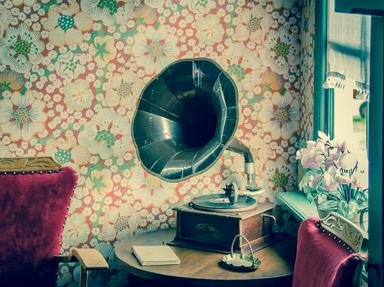Quiz Answer Key and Fun Facts
1. "When I'm calling you, oo-oo-oo-oo-oo-oo; will you answer too?" Will you answer - with the name of the 1924 musical featuring "Indian Love Call"?
2. To the barricades! The hero is a low-born thief with a great voice and a gift for poetry. He rouses the rabble of Paris to save their city. It's the 15th century on stage, and 1925 on Broadway, so it's not "Les Misérables." What's the musical?
3. "Drink Drink Drink" to the biggest hit of the era! Which of these enjoyed "Golden Days" during the 1920s, playing the most performances of any Broadway musical of the decade?
4. The title in out-of-town tryouts was "Lady Fair," but the plot involved a colonial rebellion led by a hero in disguise. What was the more appropriate name under which this musical played on Broadway?
5. "Show Boat" was a watershed musical drama in the history of Broadway. Who wrote the novel on which the musical is based?
6. This musical was a real money-maker for the owner of the Boston Red Sox baseball team. He did not sell Babe Ruth to the Yankees to finance the production. Which show was not responsible for the "Curse of the Babe" - but was responsible for a couple of great songs?
7. Florenz Ziegfeld was best known for his "Follies" - light-hearted revues featuring great songs, elaborate if often skimpy costumes, and chorines with long, long legs. Which of the following "book" (plotted) musicals did The Great Ziegfeld also produce?
8. Which Broadway musical introduced the enduring torch songs "Lover, Come Back to Me" and "Softly, As In a Morning Sunrise"?
9. "Love Will Find a Way"; "I'm Just Wild About Harry"; lyrics by Noble Sissle; music by Eubie Blake; Josephine Baker; Paul Robeson; Adelaide Hall; Bessie Allison; Florence Mills; William Grant Still and Hall Johnson in the orchestra pit ... Which 1920s musical boasted this constellation of talent?
10. "Let's Do It, Let's Fall in Love": "Birds do it, bees do it", etc. Which Cole Porter show introduced this amusing and risque "list song"?
11. Lady (and Gentleman) be Good: George and Ira Gershwin's 1924 musical "Lady Be Good" brought fame to Fred and Adele Astaire. The dancing siblings starred in a later Gershwin musical featuring the songs "S'Wonderful" and "My One and Only." What was its title?
12. "A Room With a View" and the two of you, Noel Coward and Beatrice Lillie, and "Dance Little Lady" and "World Weary" too. Which West End revue landed on Broadway in 1928?
13. They took "Manhattan," the Bronx and Staten Island too. Which famous Broadway duo achieved their first major success together with "The Garrick Gaieties" in 1925?
14. Which rosy 1928 Broadway musical featured a score by George Gershwin and Sigmund Romberg - but was filmed in 1937 with new songs by Cole Porter?
15. 1929 saw the crashing end of the Roaring '20s, and also the debut of the only British "book" musical (with a plot; not a revue) to play on Broadway during the decade. What show was it?
Source: Author
ignotus999
This quiz was reviewed by FunTrivia editor
agony before going online.
Any errors found in FunTrivia content are routinely corrected through our feedback system.


